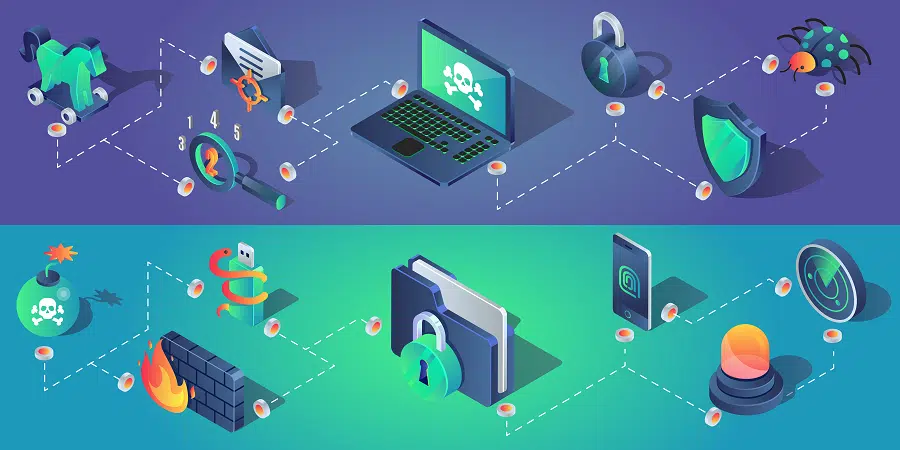The Essential Guide to Preparing for SOC 2 Compliance Requirements
SOC reports allow organizations to perform a thorough business overview within a consistent framework. There are several versions of SOC reports, each relating to different sectors. This post focuses on the SOC 2 report, which is primarily concerned with security.
The report includes an independent audit of an organization’s systems, processes, and controls relating to security, availability, processing integrity, confidentiality, and privacy, offering an unbiased review of the organization’s information security practices and policies.
Private data is already an extremely sensitive and hot-button issue, and in a cyber landscape that faces increasing threats, clients want to be sure that their data will be kept secure. While many organizations request SOC reports as a condition for working with a specific client, many others recognize the benefits of undergoing a SOC audit and choose to pursue SOC compliance independently.
SOC compliance can help instill trust and attract clients by proving reliability and demonstrating your organization’s commitment to security. Although the idea of an “audit” may seem intimidating and often makes organizations feel scrutinized, having an independent audit can offer some undeniably beneficial insights and lead to greater security development.

What are the SOC2 Compliance Requirements?
SOC 2 certification was developed by AICPA (the American Institute of CPAs) to protect the customer’s right to data privacy and ensure that organizations secure customer data by upholding five trust principles, which include:
- Security
- Availability
- Processing integrity
- Confidentiality
- Privacy
SOC 2 compliance reports audit the organization and determine its commitment to customer safety based on the above principles. This allows the SOC 3 certification to serve as reliable proof to customers that their data will be kept secure and that they can entrust the organization with their information.
In addition to strengthening brand reputation and increasing customer trust, SOC audits also allow organizations to identify and mitigate vulnerabilities, reducing cyber risks that threaten the organization’s security.
Who are SOC 2 Audits designed for?
SOC 2 audits are designed for organizations that provide services and systems to client organizations (this includes organizations that offer cloud computing, Software as a Service, Platform as a Service, and the like). In some cases, client companies will request an audit report, particularly if the organization requires confidential or sensitive information from the client.
Some clients will even require a SOC 2 audit as a prerequisite before partnering or receiving services from an organization. Organizations offering cloud services can benefit from SOC 2 compliance, as the report can significantly establish trust with clients and stakeholders.
What you can expect during a SOC 2 Audit?
Only independent CPAs (Certified Public Accounts) or external accountancy organizations may perform SOC audits, and the standards set by the AICPA regulate auditors.
The audit process includes:
- A full review of the audit scope
- Development of a project plan
- Control testing for design and operational effectiveness
- Result documentation
- A client report
SOC 2 reports are comprehensive as they examine both your system’s operation and design, meaning that the report can take months, or even a year, for the auditor to compile. The auditor will examine and test your organization’s information systems. While a year may seem like a long time to invest in the process, it’s worth every moment, as once your organization has passed a SOC audit, there can be no doubt as to its level of security and compliance.
Checklist for Preparing for SOC 2
The ideal way to begin a SOC audit is by starting the process prepared.
Here are a few of the things you can do in advance to ensure you pass your audit with flying colors:
1. Choose the right type of SOC 2 report
There are two sub-categories of the SOC 2 report, and choosing the one that best aligns with your client’s needs and the services your organization offers, can help ensure you get the maximum benefit out of the process.
The two types of reports are:
- SOC 2 Type 1: this report assesses how your organization aligns with the security policies and controls defined by the SOC 2.
- SOC 2 Type 2: Type 2 includes all the components of a Type 1 report but adds control tests that take place over an extended period.
The right report will depend on your organization’s products and services or the client’s requirements requesting the audit.
2. Build a strong compliance team
Receiving SOC 2 certification is a process that can take some time, but by taking the proper steps, you can streamline the process. One of the most effective ways to ensure your certification process runs smoothly is by building a strong compliance team ahead of time. This includes identifying all the relevant roles and which members of your organization would fill them best.
These roles include:
- Executive Sponsor: This team member communicates with the C-level executives and relates any security concerns or other relevant issues.
- Project Manager: The project manager coordinates all SOC 2 activities and fellow team members.
- Primary Author: The primary author is responsible for writing all reports and ensuring communication runs smoothly.
- IT and Security Personnel: Your IT and security personnel will be responsible for proving and demonstrating your organization’s security and ability to respond effectively to threats.
- Legal Personnel: It’s never too early to involve your legal team. You’ll need their input when working with partner vendors, creating contracts, and updating your documentation throughout the SOC 2 process.
- External Consultants: This step is crucial if it’s the first time your organization has undergone a SOC audit or if your organization has changed significantly since the last time you received certification. Companies or consultants can help guide you through the process.

3. Prepare documents and policies
Most of the preparation for a SOC 2 audit is gathering the necessary documentation. This allows you to produce the documents requested by the auditor as soon as the audit begins. Auditors generally start by asking for a collection of documents and data known as “Common Population.” Then, throughout the audit, the auditor will examine the following documents:
- Policies: Prepare for your auditor to request the full text of any policies that address the security controls delineated in the SOC 2 framework.
- Procedures: The auditor will require you to describe your team’s actions and activities, including records of the dates they were performed and the people responsible for procedures (such as off-boarding or account creation processes).
- Implementation: It’s essential to ensure you’ve implemented all the policies and procedures before the beginning of the audit.
- Operations: You will also need additional and more general items of information, such as a list of current employees, your organizational structure, any recent changes documented, and comprehensive lists of any recent security incidents that occurred within the audit period. Additionally, you will need to disclose any new business partners or third-party vendors acquired within the audit period.
4. Choose your auditor
Once you choose the audit form, get a team together and make the other relevant preparations. It’s essential to select an auditor you trust who can understand the specific needs of your business and industry. Find an auditor with plenty of experience and a history of auditing in your industry. Even once you’ve chosen a firm, you can still select the specific employees and CPAs you will work with.
Make sure your auditor understands your organization’s compliance requirements and goals. Ideally, your auditor will customize the SOC 2 process to meet your organization and industry needs, allowing you to ensure that you provide your customers with the highest level of security. Your auditor will then assess your security processes and measures and approve the audit.
5. Prepare, assess and improve
You’re now prepared to ensure your systems are ready for the audit. Some of the other things you can do before the audit include:
- Collect and assess any existing self-assessments and security control policies.
- Identify the gaps and what’s missing from these documents. This may include reevaluating your access permissions or changing how you measure the effectiveness of your policies.
- Once you have identified the issues, you can improve your existing security policies and control systems. To do so, you will need to create an improvement plan that will help you improve your policies and systems for better SOC 2 compliance.
- When upgrading your current policies, re-test them to ensure they are effective and work as expected. After you’ve ensured all your systems and policies are operating at peak efficiency, you can finalize your audit meeting.
Once you’ve completed the above steps, it’s important to implement regular security maintenance practices. Regular security awareness training is one of the most effective practices you can implement. Training can help get all your staff on board with your new, security-prioritizing agenda and empowers them with a personal stake in your organization’s security. Your employees can be your organization’s greatest vulnerability or your strongest protection against vulnerabilities and attacks. Employees can be trained to the point where they form a human firewall, gaining enough knowledge and awareness to recognize potential threats and take action necessary to keep your organization’s assets secure.
Preparation Streamlines the SOC 2 Certification Process
Although it may take up to a year, preparing your organization in advance can help it go through the SOC 2 audit process smoothly. Focusing your efforts on upgrading your organization’s security, particularly with ongoing maintenance such as cyber education for employees, helps ensure continuous compliance throughout the audit process and beyond.
Empowering your employees with the knowledge to act with your organization’s security interests in mind not only tightens security but also widens your security net by creating more eyes on the lookout for vulnerabilities. To begin implementing engaging and educational employee programs today, check out CybeReady.













